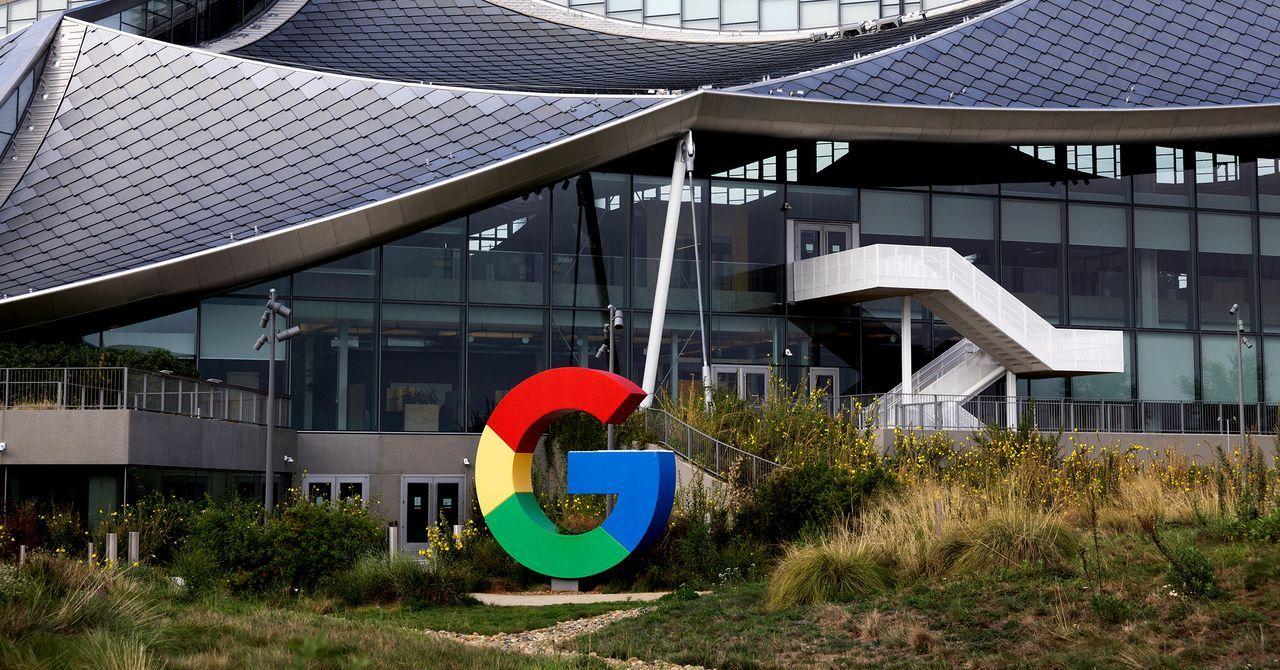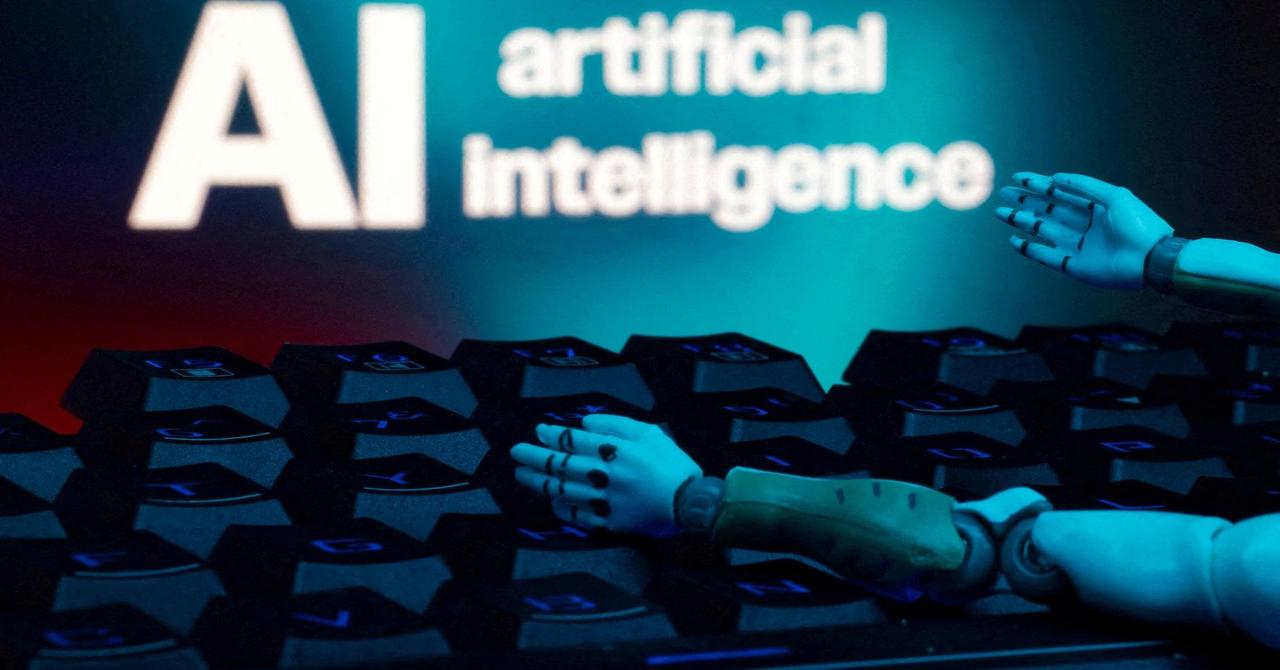Big Tech's AI Spending Surge: Citigroup Forecasts $2.8 Trillion by 2029
6 Sources
6 Sources
[1]
Citigroup forecasts Big Tech's AI spending to cross $2.8 trillion by 2029
Sept 30 (Reuters) - Citigroup has raised its forecast for AI-related infrastructure spending by tech giants to surpass $2.8 trillion through 2029, from $2.3 trillion estimated earlier, citing aggressive early investments by hyperscalers and growing enterprise appetite. The AI boom ignited by ChatGPT's launch in late 2022 has continued to fuel staggering capital outlays and data center expansion despite a brief crisis of confidence sparked by China's cheaper DeepSeek model and lingering market concerns over U.S. President Donald Trump's tariff policies. The Wall Street brokerage sees AI capex across hyperscalers to reach $490 billion by the end of 2026, up from its earlier estimate of $420 billion. Data center operators - or hyperscalers - including Microsoft (MSFT.O), opens new tab, Amazon (AMZN.O), opens new tab and Alphabet (GOOGL.O), opens new tab have already spent billions of dollars in investments to ease capacity constraints that have hampered their ability to meet surging AI demand. Citi analysts said hyperscalers were likely to reflect this incremental spend in their third-quarter earnings calls, with the guidance expected to be "building ahead of visible enterprise demand". Citi estimates global AI compute demand would need 55 gigawatt of new power capacity by 2030, translating to $2.8 trillion in incremental spend, $1.4 trillion in the U.S. alone. The brokerage said big tech firms are no longer relying only on profits to fund AI infrastructure. The costs are extremely high - about $50 billion for every 1 GW of compute capacity - and the companies are borrowing to keep up. This shift is already showing up in their financials, with spending starting to eat into free cash flows. Investors are now asking how the tech companies will fund this scale of investment, especially as traditional models fall short. "Enterprises have provided a clear external validation of value," Citi said, pointing to production deployments at companies such as Eli Lilly (LLY.N), opens new tab, Hitachi (6501.T), opens new tab and Wolters Kluwer (WLSNc.AS), opens new tab. Reporting by Rashika Singh and Joel Jose in Bengaluru; Editing by Pooja Desai Our Standards: The Thomson Reuters Trust Principles., opens new tab
[2]
Citi Sees Big Tech Spending Even More on AI Next Year -- Here's How Much
Other financing methods, like the investment agreement announced by OpenAI and Nvidia last week, have worried some onlookers fearful of an AI bubble. After a series of big cloud computing deals this month, Citigroup analysts now expect AI spending to exceed their already eye-watering forecast. Citi analysts on Tuesday estimated that hyperscalers -- including Microsoft (MSFT), Alphabet (GOOG), Amazon (AMZN), Oracle (ORCL), and CoreWeave (CWV) -- will spend $490 billion on infrastructure and other capital goods next year, up from a prior estimate of $420 billion. Citi's forecasts are slightly above the Wall Street consensus. The analysts pointed to an onslaught of announced partnerships, investments, and products in recent weeks as evidence of strong AI demand. They said their recent conversations with CIOs and CTOs at a range of companies "reflect a similar increase in urgency around adoption at the enterprise level." Citi expects AI infrastructure providers like Nvidia (NVDA) to benefit from higher spending. As such, the firm's analysts raised their price target on Nvidia shares to $210 from $200 on Tuesday. The hyperscalers are among the world's largest, most profitable companies, a fact that has enabled them to increase their infrastructure spending exponentially over the past few years. But not even hugely profitable tech giants can undertake this level of investment on their own. "It is notable that we have gone from the cash flow funded stage of this investment cycle to the debt funded stage, with the incremental risks that come with it," Citi's analysts wrote. Oracle last week sold $18 billion of bonds in the second-largest U.S. debt deal this year, according to a Bloomberg report. Oracle, which has spent more than it's made in each of the last two quarters, is expected to use the debt to increase its cloud capacity so it can deliver on a five-year, $300 billion deal with OpenAI. Adding that much capacity will be expensive. Citi sees Oracle's capital expenditures ballooning to $58 billion in fiscal year 2027, nearly three times what it spent in the fiscal year that ended in May. OpenAI, another company that will need to spend a lot to support its ambitions, took a different approach to raising money. Last week, the company struck a deal with Nvidia to deploy 10 GW of Nvidia systems over the next five years in exchange for an incremental $100 billion equity investment. OpenAI is reportedly discussing leasing -- not buying -- the chips from Nvidia, a novel arrangement that could cut its hardware costs by 10 to 15%, according to The Information. The deal raised eyebrows on Wall Street, where some analysts and investors expressed concern about the "circularity" and concentration of the AI ecosystem. Some skeptics likened it to a bailout, with Nvidia stepping in as an investor of last resort to support a cash-starved OpenAI. It has also inspired comparisons to the Dotcom Bubble, when telecom equipment providers lent to and invested in their own customers, fueling speculative fervor. But analysts see important differences between the 1990s and today. "The critical distinction, in our view, is the 'off-ramp' created by growing external demand for AI services driven by enterprise adoption," write Citi analysts. Companies like OpenAI and Meta (META), they say, are rolling out AI-driven applications and services with clear monetization prospects. And the rate of AI's technological progress, they argue, is quickly expanding the scope of potential applications.
[3]
Citigroup forecasts Big Tech's AI spending to cross $2.8 trillion by 2029 - The Economic Times
The AI boom ignited by ChatGPT's launch in late 2022 has continued to fuel staggering capital outlays and data center expansion despite a brief crisis of confidence sparked by China's cheaper DeepSeek model and lingering market concerns over U.S. President Donald Trump's tariff policies.Citigroup has raised its forecast for AI-related infrastructure spending by tech giants to surpass $2.8 trillion through 2029, from $2.3 trillion estimated earlier, citing aggressive early investments by hyperscalers and growing enterprise appetite. The AI boom ignited by ChatGPT's launch in late 2022 has continued to fuel staggering capital outlays and data center expansion despite a brief crisis of confidence sparked by China's cheaper DeepSeek model and lingering market concerns over U.S. President Donald Trump's tariff policies. The Wall Street brokerage sees AI capex across hyperscalers to reach $490 billion by the end of 2026, up from its earlier estimate of $420 billion. Data center operators - or hyperscalers - including Microsoft, Amazon and Alphabet have already spent billions of dollars in investments to ease capacity constraints that have hampered their ability to meet surging AI demand. Citi analysts said hyperscalers were likely to reflect this incremental spend in their third-quarter earnings calls, with the guidance expected to be "building ahead of visible enterprise demand". Citi estimates global AI compute demand would need 55 gigawatt of new power capacity by 2030, translating to $2.8 trillion in incremental spend, $1.4 trillion in the U.S. alone. The brokerage said big tech firms are no longer relying only on profits to fund AI infrastructure. The costs are extremely high - about $50 billion for every 1 GW of compute capacity - and the companies are borrowing to keep up. This shift is already showing up in their financials, with spending starting to eat into free cash flows. Investors are now asking how the tech companies will fund this scale of investment, especially as traditional models fall short. "Enterprises have provided a clear external validation of value," Citi said, pointing to production deployments at companies such as Eli Lilly, Hitachi and Wolters Kluwer.
[4]
AI Spending Could Exceed $2.8 Trillion Through 2029 | PYMNTS.com
By completing this form, you agree to receive marketing communications from PYMNTS and to the sharing of your information with our sponsor, if applicable, in accordance with our Privacy Policy and Terms and Conditions. That's according to a report Tuesday (Sept. 30) by Reuters, citing projections from Citigroup, which had earlier forecast that spending figure to come to $2.3 trillion. The bank pointed to early investments by hyperscalers and rising demand for enterprise artificial intelligence (AI) use. Citi expects capital expenditures among hyperscalers -- or data center operators -- to reach $490 billion by the end of next year, up from an earlier estimate of $420 billion. As Reuters noted, hyperscalers such as Google, Amazon and Microsoft have already spent billions to ease capacity constraints that have limited their ability to meet rising AI demand. Citi analysts this spending would likely show up on these company's third-quarter earnings calls, with the guidance expected to be "building ahead of visible enterprise demand." The forecast also estimates global AI compute demand would require 55 gigawatt of new power capacity by the end of the decade, or $2.8 trillion in incremental spending, with $1.4 trillion happening just in the U.S. Big Tech companies, Citi said, no longer rely solely on profits to fund AI infrastructure. The costs are steep -- about $50 billion for every gigawatt of compute capacity -- leading companies to borrow to stay on top of demand. As PYMNTS wrote earlier this week, that shift "is changing who can compete and how quickly and introduces new risks for enterprises buying AI services." This report was in response to a Wall Street Journal examination of the role debt is playing in the AI sector. That report cites the example of Oracle, which might need to borrow $25 billion annually over the next four years to fulfill its side of its partnership with OpenAI. "The wager is that demand will catch up," that report said. "But the liabilities are large and the timelines tight. Moody's flagged significant risks tied to equipment, land and power costs and gave Oracle a negative outlook in July." Analysts have pointed out OpenAI would need to scale to more than $300 billion in yearly revenue by 2030 from about $12 billion today to justify the spending connected to its $300 billion partnership with Oracle. "Debt can accelerate the AI infrastructure race, but it also adds fragility," PYMNTS wrote. "For banks, lenders and corporate adopters, the key questions now are less about model accuracy and more about balance sheet durability, who is financing the compute behind the demo, on what terms, and how those obligations might shape the availability and price of enterprise AI over the next cycle."
[5]
BofA expects annual AI investments to nearly triple between CY25-30E to over $1.2T By Investing.com
Investing.com -- Bank of America analysts said they remain bullish on artificial intelligence capital spending and forecast annual investments will "nearly triple between CY25-30E to over $1.2Tn+, constrained only by [the] ability to scale buildings and power." The firm highlighted four main drivers of the increase: "Upgrading trad. infrastructure to accelerated computing; Protecting existing moats in search, social, ecommerce, cloud services from being disrupted by likes of OpenAI, xAI, neoclouds; Sovereign builds-outs; and Steady enterprise adoption of AI productivity tools." BofA said the current AI infrastructure buildout is more resilient than past cycles because it is "funded by strong cash flows of hyperscalers and government buyers - top 5 US cloud providers alone will spend capex equal to 25% of sales CY25 sales, well covered by 30%+ operating cash flows - while AI adoption can happen without costly consumer device upgrades." The bank raised its cloud capex tracker, now seeing "$443bn/$528bn in capex from top public cloud vendors, up +58%/+19% YoY from +54%/+16% prior. Capex could 3x towards $1.2Tn+ by CY30E at current levels of 25-30% capex intensity." Chip companies such as Nvidia, Broadcom, AMD, Marvell, Credo, and semiconductor equipment vendors Lam Research and KLA were cited as well-positioned. On concerns around vendor financing, BofA said Nvidia's $100 billion commitment to OpenAI "should not be viewed as free money/GPUs" but instead as a force multiplier driving further hyperscaler investment.
[6]
Citigroup forecasts Big Tech's AI spending to cross $2.8 trillion by 2029
(Reuters) -Citigroup has raised its forecast for AI-related infrastructure spending by tech giants to surpass $2.8 trillion through 2029, from $2.3 trillion estimated earlier, citing aggressive early investments by hyperscalers and growing enterprise appetite. The AI boom ignited by ChatGPT's launch in late 2022 has continued to fuel staggering capital outlays and data center expansion despite a brief crisis of confidence sparked by China's cheaper DeepSeek model and lingering market concerns over U.S. President Donald Trump's tariff policies. The Wall Street brokerage sees AI capex across hyperscalers to reach $490 billion by the end of 2026, up from its earlier estimate of $420 billion. Data center operators - or hyperscalers - including Microsoft, Amazon and Alphabet have already spent billions of dollars in investments to ease capacity constraints that have hampered their ability to meet surging AI demand. Citi analysts said hyperscalers were likely to reflect this incremental spend in their third-quarter earnings calls, with the guidance expected to be "building ahead of visible enterprise demand". Citi estimates global AI compute demand would need 55 gigawatt of new power capacity by 2030, translating to $2.8 trillion in incremental spend, $1.4 trillion in the U.S. alone. The brokerage said big tech firms are no longer relying only on profits to fund AI infrastructure. The costs are extremely high - about $50 billion for every 1 GW of compute capacity - and the companies are borrowing to keep up. This shift is already showing up in their financials, with spending starting to eat into free cash flows. Investors are now asking how the tech companies will fund this scale of investment, especially as traditional models fall short. "Enterprises have provided a clear external validation of value," Citi said, pointing to production deployments at companies such as Eli Lilly, Hitachi and Wolters Kluwer. (Reporting by Rashika Singh and Joel Jose in Bengaluru; Editing by Pooja Desai) By Rashika Singh and Joel Jose
Share
Share
Copy Link
Citigroup raises its forecast for AI-related infrastructure spending by tech giants to $2.8 trillion through 2029, citing aggressive investments by hyperscalers and growing enterprise demand. The AI boom continues to fuel massive capital outlays and data center expansion.
Citigroup's Revised AI Spending Forecast
Citigroup has significantly raised its forecast for AI-related infrastructure spending by tech giants, projecting it to surpass $2.8 trillion through 2029, up from its earlier estimate of $2.3 trillion
1
. This revision is attributed to aggressive early investments by hyperscalers and growing enterprise appetite for AI technologies3
.
Source: PYMNTS
Hyperscalers' Capital Expenditure
The Wall Street brokerage anticipates AI capital expenditure across hyperscalers to reach $490 billion by the end of 2026, an increase from its previous estimate of $420 billion
1
. Data center operators, including Microsoft, Amazon, and Alphabet, have already invested billions to address capacity constraints hampering their ability to meet surging AI demand2
.
Source: ET
AI Compute Demand and Power Capacity
Citi estimates that global AI compute demand will require 55 gigawatts of new power capacity by 2030, translating to $2.8 trillion in incremental spend, with $1.4 trillion in the U.S. alone
1
. The costs are substantial, with approximately $50 billion required for every 1 GW of compute capacity3
.Shift in Funding Strategies
Big tech firms are no longer relying solely on profits to fund AI infrastructure. The enormous costs have led companies to borrow to keep up with demand
1
. This shift is already impacting their financials, with spending starting to eat into free cash flows2
.Novel Financing Approaches
Companies are exploring innovative financing methods. For instance, Oracle recently sold $18 billion of bonds in the second-largest U.S. debt deal this year to increase its cloud capacity
2
. OpenAI struck a deal with Nvidia to deploy 10 GW of Nvidia systems over five years in exchange for a $100 billion equity investment, potentially reducing hardware costs by 10-15% through leasing arrangements2
.Related Stories
Enterprise Adoption and Market Validation
Citi analysts point to production deployments at companies such as Eli Lilly, Hitachi, and Wolters Kluwer as clear external validation of AI's value
1
. The rate of AI's technological progress is rapidly expanding the scope of potential applications, with companies like OpenAI and Meta rolling out AI-driven services with clear monetization prospects2
.Long-term Projections and Risks
Bank of America analysts forecast that annual AI investments will nearly triple between 2025 and 2030, potentially exceeding $1.2 trillion
5
. However, this massive spending introduces new risks for enterprises buying AI services, with concerns about balance sheet durability and the terms of financing becoming increasingly important4
.References
Summarized by
Navi
[3]
Related Stories
Big Tech Triples Down on AI Infrastructure Spending Despite Bubble Concerns
23 Oct 2025•Business and Economy

Big Tech's AI Spending Spree: Reshaping the Economy and Raising Concerns
02 Aug 2025•Business and Economy

AI Boom Faces Headwinds from Global Trade Tensions and Economic Uncertainty
23 Apr 2025•Business and Economy

Recent Highlights
1
Google launches Gemini 3 Flash as default AI model, delivering speed with Pro-grade reasoning
Technology

2
OpenAI launches GPT Image 1.5 as AI image generator war with Google intensifies
Technology

3
OpenAI launches ChatGPT app store, opening doors for third-party developers to build AI-powered apps
Technology





